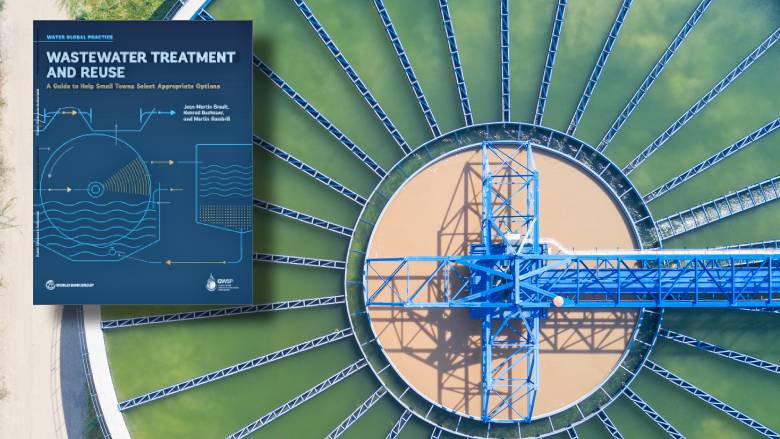Important Steps in Municipal Waste Water Treatment Plants
Important Steps in Municipal Waste Water Treatment Plants
Blog Article
Strategic Approaches to Enhance Waste Water Therapy Performance and Reduce Ecological Effect
In the world of drainage treatment, the quest for improved effectiveness and minimized ecological influence is a continuous challenge that demands calculated options. As culture grapples with the necessary to take care of water resources sustainably, a nuanced approach becomes vital. The assimilation of innovative therapy technologies, energy-efficient processes, resource healing methods, boosted nutrient elimination techniques, and clever surveillance and control systems stands for a diverse framework for attending to these pushing worries. Nevertheless, what lies at the core of this complicated web of approaches is the prospective to change the means we come close to waste water treatment, not just as a procedure of disposal, however as a useful chance for development and environmental stewardship.
Advanced Therapy Technologies
Advanced membrane filtering systems have reinvented advanced wastewater therapy procedures, significantly enhancing the elimination of pollutants. This technology has shown to be extremely efficient in eliminating a vast array of contaminants, including drugs, hefty steels, and natural compounds, which are usually testing to get rid of with typical therapy techniques.
Furthermore, membrane filtration systems use countless benefits over traditional treatment strategies. They need less room, create higher-quality effluent, and are a lot more immune to fluctuations in influent water quality. Furthermore, these systems are very flexible and can be conveniently integrated right into existing treatment plants or utilized as standalone devices for decentralized applications. As the need for tidy water remains to rise, the adoption of innovative membrane layer purification modern technologies is crucial to make certain reliable and sustainable wastewater therapy techniques.
Energy-Efficient Processes
The integration of energy-efficient procedures in wastewater therapy systems is critical for optimizing resource usage and lowering operational expenses. One essential method to enhancing energy effectiveness in wastewater therapy is the use of sophisticated oygenation systems, such as fine bubble diffusers or surface aerators, which can improve oxygen transfer effectiveness and reduce energy consumption.
Furthermore, maximizing procedure control and automation through the use of advanced sensing units and keeping an eye on systems can improve total power effectiveness by changing procedures in real-time based upon actual need and conditions. Implementing power audits and on a regular basis monitoring power performance indications are essential practices to recognize locations for renovation and track energy-saving efforts successfully. Generally, the adoption of energy-efficient processes in wastewater treatment not just profits the setting however likewise adds to lasting price financial savings and functional sustainability.
Resource Recovery Strategies
With a focus on maximizing source application and sustainability in wastewater therapy systems, the execution of source healing techniques becomes a pivotal aspect in enhancing operational performance. Source recuperation strategies in wastewater treatment entail the identification and removal of beneficial sources from the waste stream, therefore transforming what was when considered waste into a valuable asset. By implementing source recovery strategies such as nutrient removal and healing, energy generation from raw material, and the manufacturing of recyclable water, wastewater therapy plants can reduce ecological impact while optimizing effectiveness.

Improved Nutrient Elimination Techniques
Carrying out sophisticated nutrient removal strategies is crucial for maximizing the performance of wastewater treatment systems. One of the key strategies utilized for improved nutrient removal is the process of biological nutrient elimination (BNR), which involves the removal of nitrogen and phosphorus through biological procedures.

In addition to BNR, progressed therapy approaches such as membrane bioreactors (MBRs) and created marshes can additionally be employed to enhance nutrient removal effectiveness. By integrating these sophisticated nutrient elimination strategies right into wastewater treatment systems, markets and municipalities can effectively minimize nutrient air pollution and i thought about this safeguard the atmosphere.
Smart Surveillance and Control Equipment
Utilizing sophisticated technology, the integration of wise surveillance and control systems changes the functional performance of wastewater treatment facilities. These systems incorporate sophisticated sensors and information analytics to continually check essential specifications such as pH levels, turbidity, dissolved oxygen, and circulation prices in real-time. By accumulating and analyzing this data, operators can acquire important insights into the efficiency of the treatment processes, enabling positive modifications to maximize therapy effectiveness.
Smart tracking and control systems likewise support remote tracking capabilities, permitting operators to gain access to real-time information and control functions from off-site areas. This remote access enhances functional flexibility and responsiveness, making it possible for swift treatments in instance of system malfunctions or variations in influent quality. Furthermore, the anticipating maintenance capabilities of these systems assist avoid tools failings and lessen downtime, eventually improving the overall integrity of wastewater therapy operations (Waste Water Treatment).
Final Thought
In verdict, critical approaches such as sophisticated therapy innovations, energy-efficient procedures, source recovery methods, boosted nutrient removal methods, and clever monitoring and control systems play a crucial role in improving wastewater therapy effectiveness and decreasing environmental effect. By applying these methods, wastewater therapy plants can improve their total efficiency, decrease energy consumption, recover beneficial resources, and make certain compliance with ecological laws. These approaches are necessary for reliable and sustainable wastewater management techniques.

In conclusion, critical techniques such as advanced therapy innovations, energy-efficient processes, resource recuperation approaches, improved nutrient elimination methods, and smart surveillance and control systems play an important role in boosting wastewater treatment performance and reducing environmental influence.
Report this page